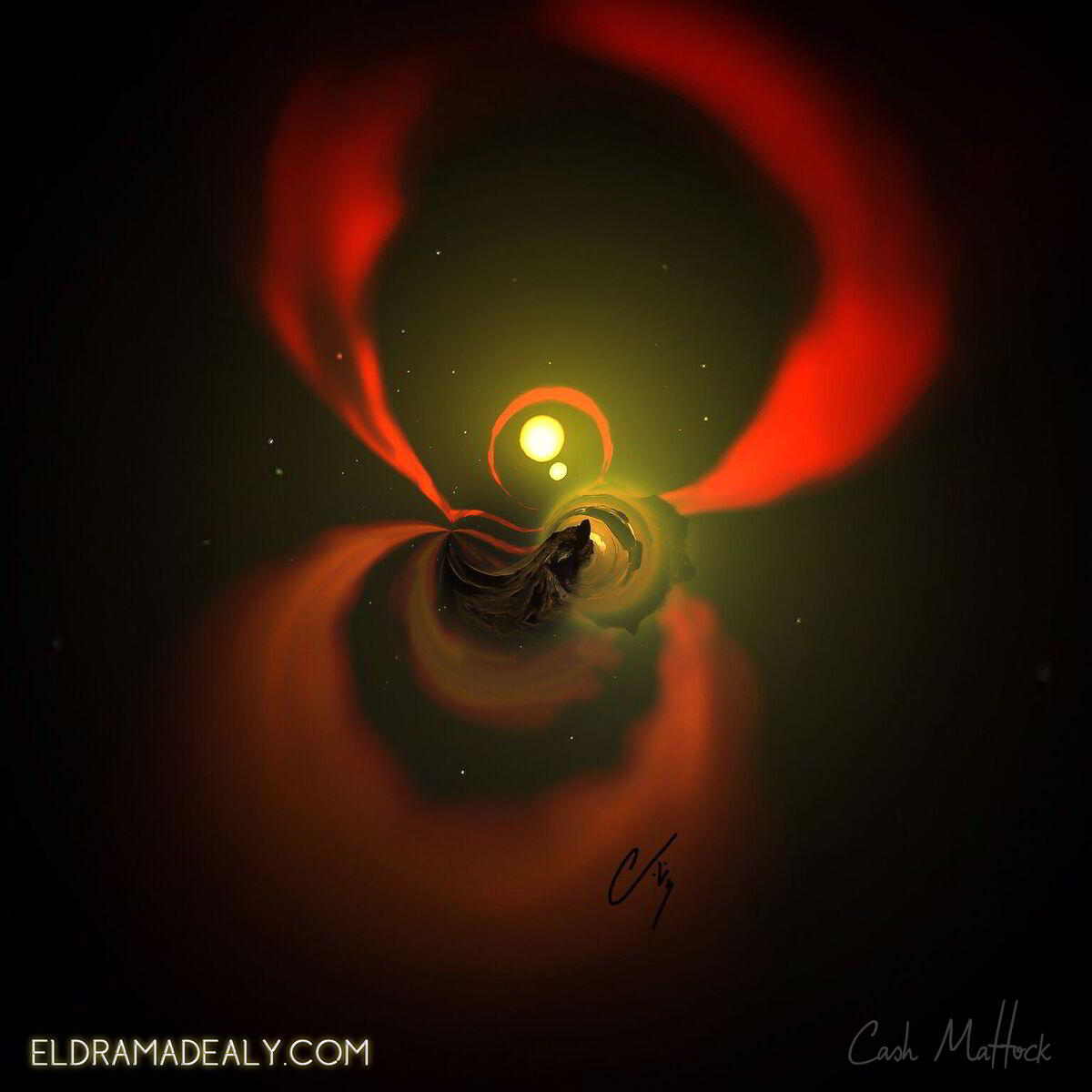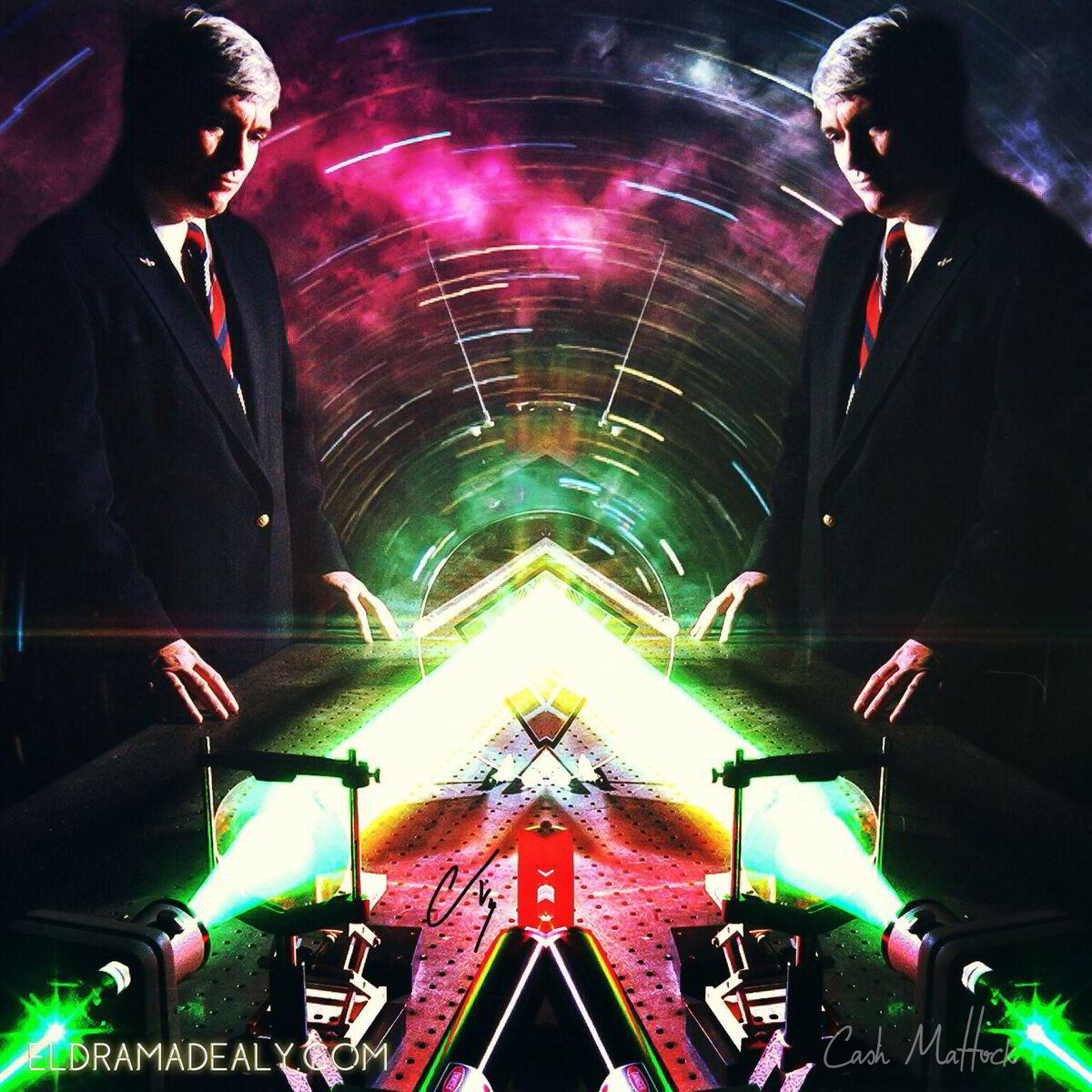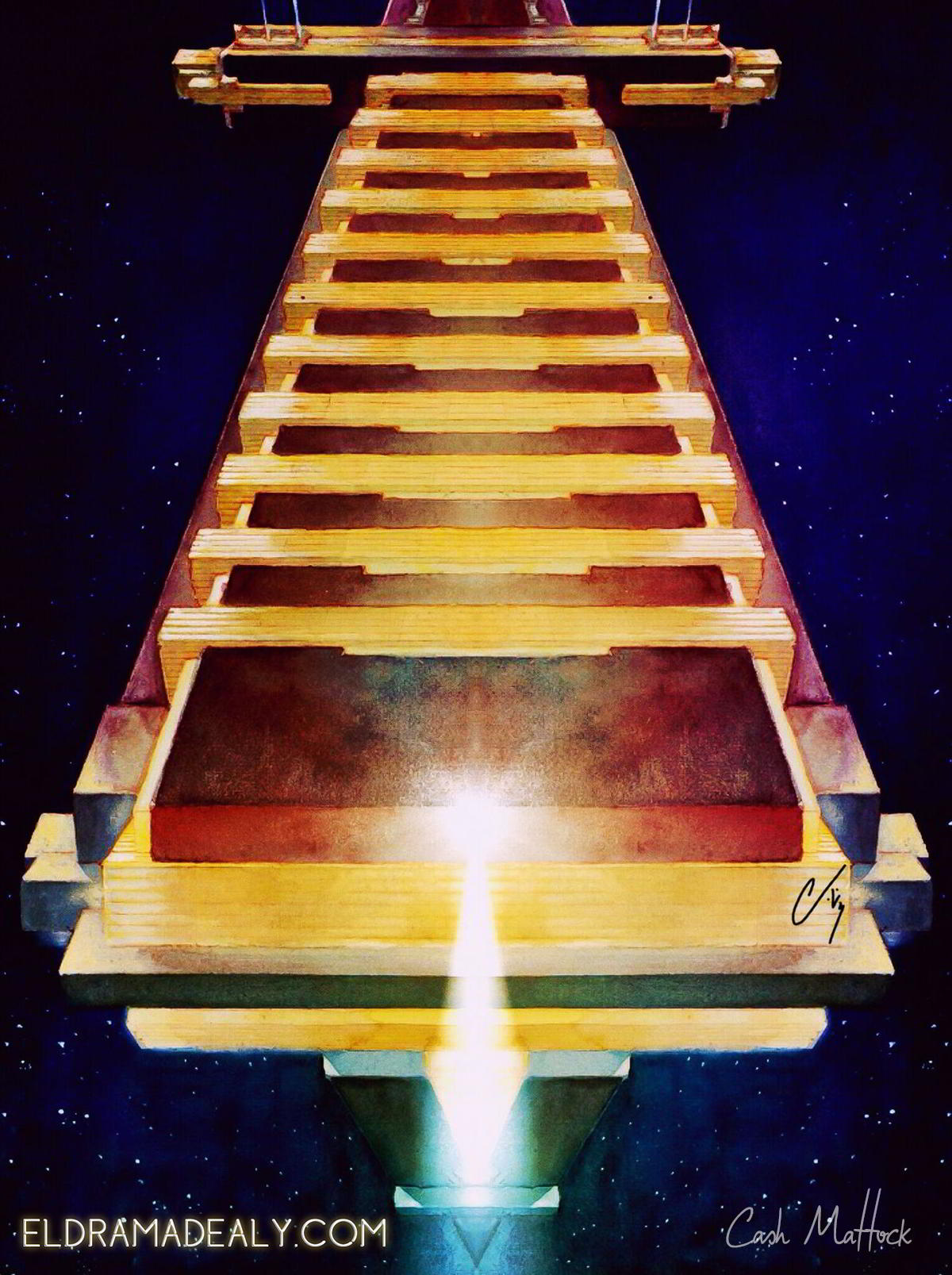~ When we think about space the first thoughts are usually inspired by those of our childhood. We didn’t entirely understand what space was but we could still gaze into the night sky - mesmerized by the stars and the moon. As adults, our vision of space has grown much larger but our sense of wonder never weakens. With modern telescopes and probes like Juno sending us astonishing images, we can easily imagine that our own solar system has much more to reveal to us. It’s estimated that there are tens of billions of solar systems in our galaxy and there is more than a hundred billion galaxies in the universe so there’s no telling what we will find as our technology progresses.
Cash Mattock
click imagenes para agrandar / click images to enlarge them
Outer space is about sixty miles above the Earth’s surface. That’s not that far when you think about it with relation to how large our planet is. Space itself is actually much closer than most of us realize. Outer space is a vacuum so sound cannot carry but space is not entirely void of matter. There is a lot of gas, dust and other bits of matter floating around. There are also the celestial/astronomical objects like planets, galaxies and black holes. If we also take into account energy, forces and particles then we find that nothing is really empty.
I think that one of the greatest mysteries is that no one knows how large space is. The light from the farthest reaches of our observable universe takes light-years to reach us so the farther we look the farther back in time we can see. At this time, we can see 13.7 billion light-years into the past but the universe is infinitely larger than that.
We are still trying to understand what space is. We think of space as nothingness but space can bend, twist and ripple so therefore it must be more. The force of gravity bends space and cradles planets into orbit. It can also funnel space towards the event horizon of a black hole where light can’t even escape. The vastness of space distracts us from what it actually is. Isaac Newton thought of space metaphorically as a stage. This makes sense but what some fail to realize is that the set of this stage encompasses everything down to the smallest particle. If you’ve read my El Drama de Aly series titled “Color”, I talk about how atoms are 99.9% empty space. Since matter is made up of atoms then all matter is 99.9% empty. What really gives matter is solidity and breadth is forces. Everything in between is space. We typically perceive our atmosphere as the boundary between us and outer space. It is a shield from the vacuum but space is part of everything including the atmosphere and the Earth; right down to the Earth’s core.
Dark matter and dark energy are more telltale signs that space is not empty. We only understand the mass-energy of 4.9% of the universe. 26.8% is dark matter and 68.3% is dark energy. Galaxies spin in an interesting way. It’s unlike that of a solar system. The edge of a galaxy spins at the same speed as the center of the galaxy. This would edict that there is an unobservable gravitational mass somehow tethering all the celestial bodies into a galactic do-si-do around a supermassive black hole that is at the center of every galaxy. Dark energy is responsible to the accelerating expansion of the universe. Logic would dictate that the expansion of the universe should be slowing down with relation to the force of gravity but it is actually speeding up so there must be an energy force to account for this anomaly but we haven’t figured it out yet.
A lot of people have difficulty understanding space-time. This isn’t surprising so I’ll try to explain it in a very simple way. The speed of light is always constant. If you were to race super fast against a beam of light you would think that your speed would be combined with the speed of the beam. This is not true. The speed of the beam never changes no matter how fast you race towards it or away from it. The speed of light is actually the speed limit of the universe. Any massless particle moves at the speed of light. This universal constant is the speed of causality or “c” (i.e. celeritas) in E=mc². The speed of light is the speed of causality and not the other way around. Since the speed of causality (or light) never changes then time and space must be fixed together. That’s why the faster an object moves the slower time passes for said object. If you had the ability to travel almost at the speed of light then space would appear to bend around you. If time dilation was not taken into account then things like the Global Positioning System (GPS) which is part of the Global Navigation Satellite System (GNSS) would be useless. The atomic clocks on the GPS satellites had to me modified to account to the difference in microseconds predicted by General and Special Relativity. If this wasn’t accounted for then the global positions would be off by a cumulative rate of about 10 kilometers a day.
A physicist by the name of Hendrik Casmir took two uncharged very thin metal plates and placed them in a vacuum a few nanometers apart. He hypothesized that space was in fact so flooded with energy that it could force the plates to move and he was right. The quantum field forced the plates together. This force is created by what physicist call virtual particles. This means that space is intensely infiltrated by field disturbances called virtual particles that have to power to move objects.
The Higgs field is an energy field composed of an infinite number of subatomic particles called Higgs bosons that exists everywhere in the universe. The Higgs field is responsible for the mass of particles. The grater a particle interacts with the field the greater it’s mass. If we took away the Higgs field then all the particles would be massless moving at the speed of light and gravity would not exist.
Even when space seems empty it isn’t and when it seems full space is still in-woven with whatever is filling it. It’s a marginally discovered, undefined, unnamed ocean to which every particle of the universe is surfing on. The next time that you stare into a void remember that it’s the things that you don’t see that actually run the universe.
See more from Cash Mattock / Ver más de Cash Mattock
Cash Mattock Home ~ Elements ~ Architecture ~ The Ratios of Nature ~ Destruction ~ Space ~ Color ~ Industry ~ Esoteric Theories of Flora, Fauna and the Universe ~ About Cash MattockIf you liked this page, follow us on Facebook, like us, and give us your comments. Your comments make us grow, thank you.
Si te gustó esta página, síguenos en Facebook, dános un like y tus comentarios. Tus comentarios nos hacen crecer, gracias.











